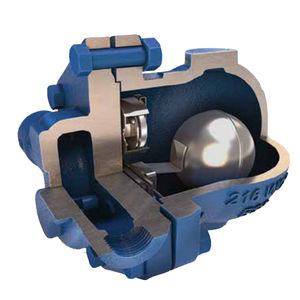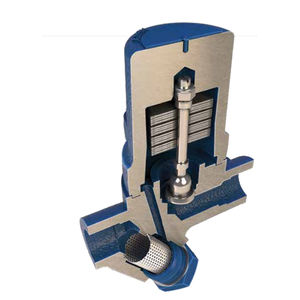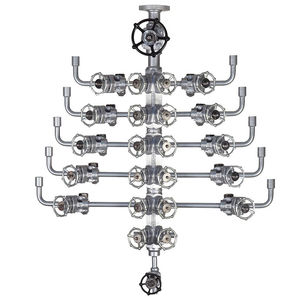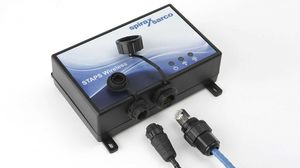
Condensate drain BP seriesautomaticthermostatic


Add to favorites
Compare this product
Characteristics
- Medium
- condensate
- Operational mode
- automatic
- Type
- thermostatic
- Operating pressure
Max.: 32 bar
(464.12 psi)Min.: 6 bar
(87.02 psi)
Description
Thermostatic steam traps
How a balanced pressure thermostatic steam trap works
1. On start-up, cold air and condensate enter the trap. As the capsule is also cold, the valveis open and the air and condensate are discharged.
2. The capsule warms up as the condensate approaches steam temperature. Its liquidfilling boils, and the resultant vapour pressure acting on the diaphragm pushes the valvehead towards the seat, fully closing at the selected dischargetemperature before any steam is lost.
3. As the condensate within the trap cools, the vapour fillingcondenses and the internal capsule pressure falls. The valvereopens, discharges condensate and the cycle repeats.
Features and benefits:
• Condensate is discharged at below steam saturation temperature, utilising sensible heat in the
condensate and reducing flash steam losses
• Automatically discharges air and other incondensable gases to aid rapid warm-up of plant
• It automatically adjusts itself to variations of steam pressure up to its maximum
operating pressure and can tolerate superheat up to 70°C
• Discharge temperature set by capsule selection – no requirement to adjust on site
• Manufactured using advanced technology to exacting quality standards
• All stainless steel internals extend working life and reduce plant maintenance
• The BPC32 and BPS32 series has a two bolt cover design for ease of maintenance.
Catalogs
Steam Trapping Overview
22 Pages
Exhibitions
Meet this supplier at the following exhibition(s):

Related Searches
- Centrifugal classifier
- Filter housing
- Liquid separator
- Cartridge filter housing
- Metal filter housing
- Automatic trap
- Condensate trap
- Water separator
- Gas filter housing
- Filter-regulator
- Vertical classifier
- Air drain
- Compressed air filter-regulator
- Mechanical trap
- Float drain
- Compressed air filter housing
- Gas trap
- Steam trap
- Iron separator
- Manual trap
*Prices are pre-tax. They exclude delivery charges and customs duties and do not include additional charges for installation or activation options. Prices are indicative only and may vary by country, with changes to the cost of raw materials and exchange rates.









